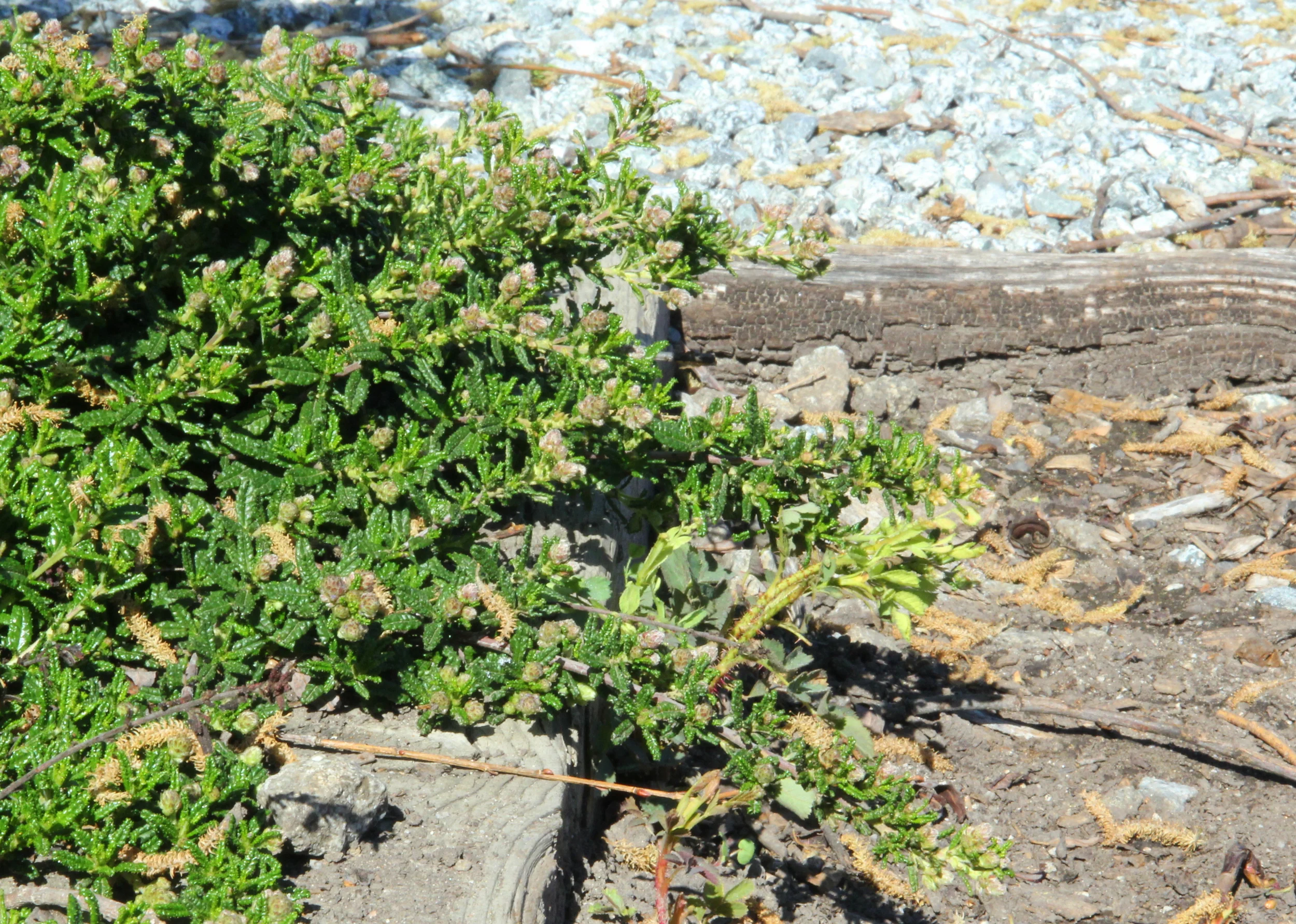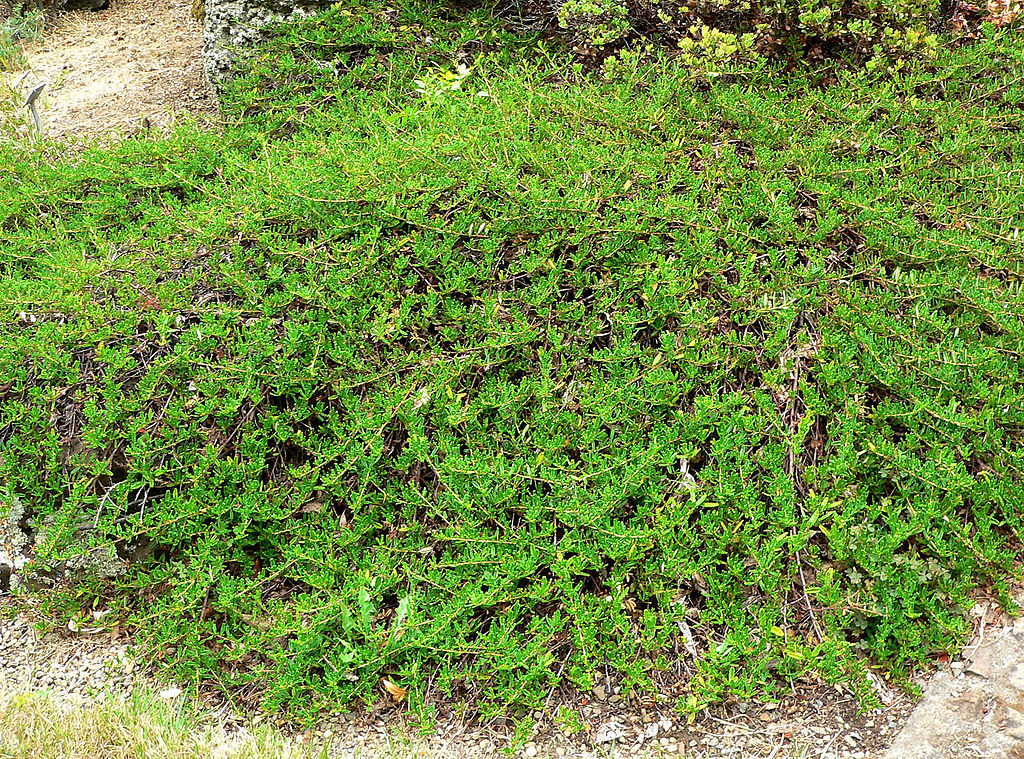Ceanothus hearstiorum
San Simeon Ceanothus
This rare shrub was found growing in the area of Hearst Castle in San Simeon in coastal chaparral and grasslands. It is unusual in that it forms a very flat mat only 6 inches tall and up to 8 feet wide. As with most Ceanothus, it is at its best in full sun with little water once it is established (no sprinklers). The flowers are blue and bloom in 1-inch clusters in early spring.
Wildlife value: Ceanothus are hosts to a number of butterflies, including the Pipevine Swallowtail, Brown Elfin, Hedgerow Hairstreak, and Echo Blue. Their abundant flowers draw many insects. Ceanothus leaf litter supports plenty of invertebrates which, in turn, feed birds and lizards. The foliage provides excellent cover. The larger-leaved species are good forage for deer. Quail eat the small, hard seeds, and a number of mammals both large and small browse the twigs and foliage.
Additional notes about Ceanothus: Many Ceanothus are prone to disease in summer-wet soils, so little watering is recommended after the plants are established. Tip-pruning will keep plants compact. Small, wrinkled, or spiny-leaved forms are usually unattractive to deer. Ceanothus roots fix nitrogen in the soil. These plants will suffer if their roots are handled. Do not pry or prune the roots.


